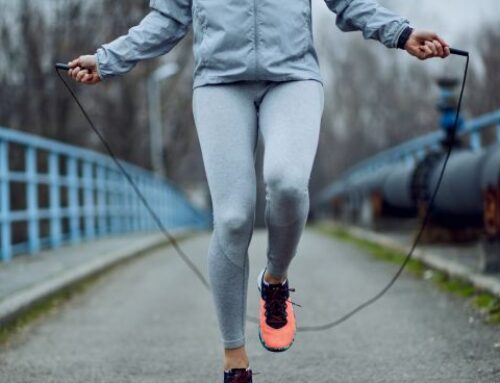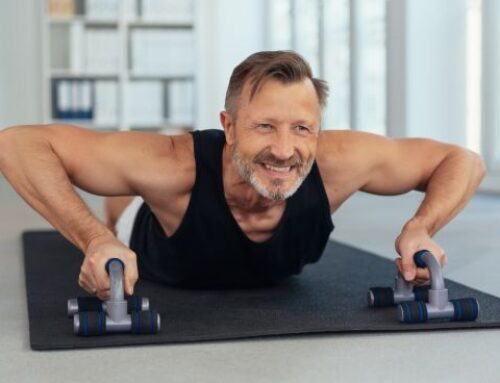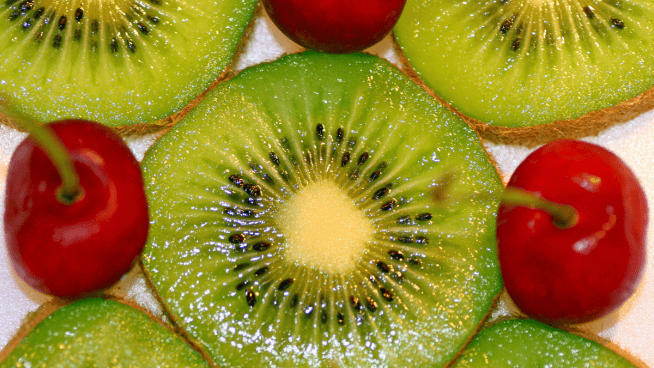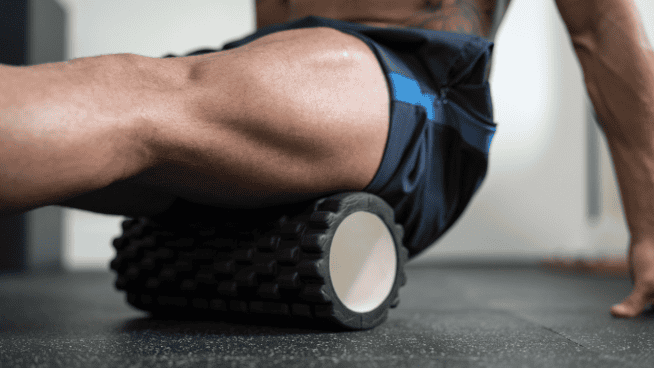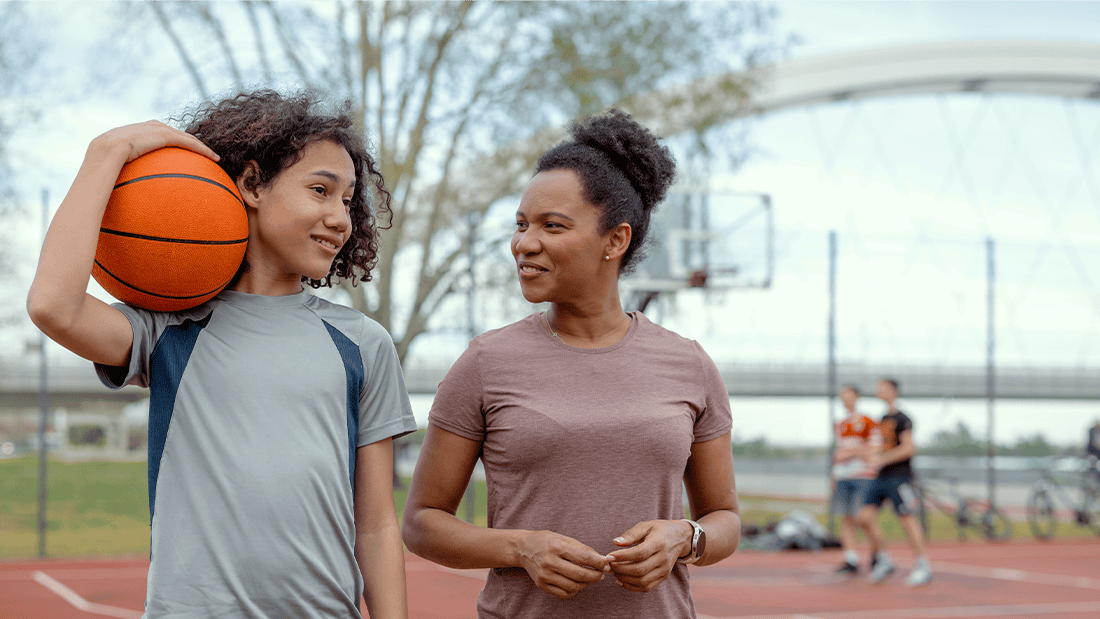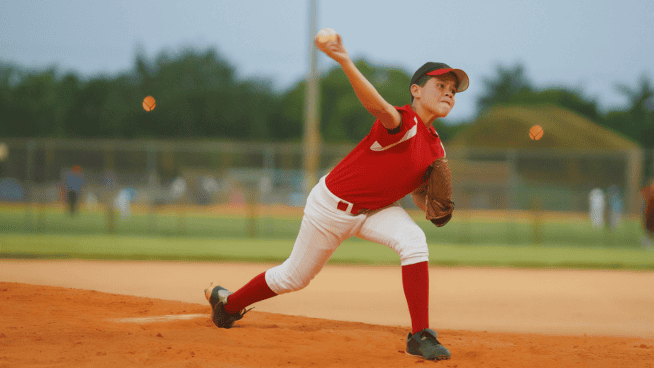Want To Improve Your Sport? Try Boxing!
Attention baseball players, football, hockey, lacrosse, almost any athlete in a sport requiring agility, quickness, and rotational power. Want to improve your performance? Try boxing!
I have used boxing training with excellent results! Including hockey players, football wide receivers and linemen, baseball, and numerous other athletes. Why? SO many reasons! Here are a few of my top.
Reasons To Try Boxing
1. Quickness and Agility.
First, let’s define what quickness and agility is.
Quickness refers to the rapid responses of your body. You can think of quickness as instant reflexive reactions. It is that step off the line vs. a 40-yard dash (which is speed) in football.
Agility is the ability to change direction quickly. This includes reacting to a stimulus, starting and changing direction quickly and efficiently, and being ready to change direction or stop fast, smooth, efficiently, and repeatably. In sport, this can be chasing or evading an opponent, or reacting to a moving ball. It is typically in response to a stimulus. The 20y shuttle test used in football and baseball, for example, is a measure for quickness and agility. Agility is an independent motor skill and needs to be specially trained. Research has shown limited transfer between maximal speed and agility.
Boxing is all about quickness and agility! Footwork is a make or break in boxing and requires constant moving, reacting, stopping, starting. The great thing about training agility through boxing is that it is reaction-based. Your opponent moves, you move. This incorporates anticipatory actions that transfer into your sport. It is often said the best athletes know where to be even before action is made.
There are many ways to train this. Here are a couple of examples:
a) Shadowing. Keeping arm’s length from a friend, shadow him or her. That person can move backward, forwards, side to side. Try and mirror them for ~15-20 seconds. Long enough to make it challenging, short enough to keep your focus without getting too tired and losing the quickness aspect. If you do not have a friend to do this with, try ‘shadow boxing.’ A typical warm-up, practice various movement patterns with your invisible opponent.
b) Jump rope, a must-have for boxing, is also an excellent tool for both quickness and agility. Try a variation of jump rope exercises: high knees, straddle, footswitches. See these speed drills for ideas. See how long it takes you to do 100 jumps. Can you improve it?
2. Core, including Rotational Power
For both agility and quickness, and for crushing that ball or puck.
For speed and agility, core works hand in hand with lower body strength. With the change of direction (COD), ground reaction forces are a function of the entire kinetic change, not just leg muscles. Your core is responsible for transmitting the forces and initializing the reaction.
Your power comes from the core, whether it is throwing, hitting, taking that shot, or evading an opponent.
I have held baseball pitching clinics, alongside a coach. We incorporated boxing training with skill work. The coach first approached me because he noticed the ‘cross’ used similar biomechanics as throwing a baseball. I was keen and interested! And it worked! My throwing velocity significantly improved after only a couple of weeks with one session per week, as did balance, quickness, and agility.
Conversely, boxers have been known to hit the bag with a bat for strength-power training. Boxers are known for their vast core work, especially their rotational core.
Core Exercises For Rotational Power
- Russian twists (with a medicine ball, lightweight, or nothing)
- Side touches
- Medicine ball side tosses
- Anti-rotation on a cable machine
- Combat sit-ups (an exercise I designed for football linemen)
3. Balance and stability
Single leg balance and lateral movements are beneficial to COD training[1]. Boxing is all about balance and stability. If you are not balanced while throwing a punch, your power decreases. If you are not balanced when getting hit, you will not absorb the impact and a higher chance for a knockdown. Even though it may look like a boxer is balanced on both feet, it is a dance. It is all about the move and ‘stick’ (balance)
Some exercise ideas:
- Single leg hops (optional jump rope)
- Shuffle and stick
- Hop side to side (alternating balance on the standing leg)
- Skater side hops with a medicine ball
4. Stamina and overall fitness
Fatigue hinders performance. Muscle strength decreases, reaction, and movement times are prolonged, neuromuscular coordination is reduced, and speed and agility are slower. When you are physically fatigued, you also get mentally tired. Mentally fatigued athletes have reduced concentration and alertness. This impedes performance and increases your likelihood of injury.
The higher endurance level can maintain the quality of each burst activity throughout the game and still be relatively “fresh” during the latter parts of the game.
Better Endurance → Less Fatigue → Better Performance
Think “Jerry Rice” 4th quarter stamina.
A study verified that a boxing program enhanced physical fitness significantly in the 30m sprint test, 10s pushups, standing broad jump, 5 x 10m shuttle run test, as well as muscular stamina-strength.
Boxing is defined as a power sport, but stamina is also necessary to go round after round. Boxing training variables is correlated to positive nervous system adaptations, with all muscles developed significantly combining punching techniques and footwork. By training movement patterns, you are effectively training all muscles and the brain-body condition.
5. Focus and Concentration, Confidence, Enjoyment.
The mental aspects of the game. Boxing is much more than just punching things. Techniques in boxing required intense mental focus, which can be expanded into other aspects of sport. Boxing training enhances confidence, learning new skills, and nailing a combo, feeling like you can maneuver and handle yourself.
It is also an enjoyable way to train. I have yet to meet an athlete who did not get excited to incorporate some boxing training!
Enjoyment → Increased Effort → Better Focus → Confidence in maneuvering and handling yourself → Better Performance
Incorporating a boxing training program is an excellent method to develop physical fitness, including agility and quickness, rotational power, coordination, strength-stamina, and reducing the chance of injury among other benefits such as self-esteem, concentration, and confidence.
Mike Vellucci, head coach, has been implementing boxing training in the Ontario Hockey League. “It’s conditioning, it’s hand-eye coordination, it’s all those little things that add up. It’s great conditioning.” “It gives you a little more courage and a little more self-confidence to be on the ice and protect yourself “Vellucci
When using boxing training for your sport, I do not recommend training solely as a boxer. For example, hockey players throw hooks a bit differently than a professional fighter would. Boxers also use the ‘jab’ a lot, which is opposite to the throwing arm. Transfer training with a purpose can be extremely useful. Note: “with a purpose.” I recommend a credible bio-mechanist / strength and conditioning coach to work with you. Remember, train as you play!
RECOMMENDED FOR YOU
Want To Improve Your Sport? Try Boxing!
Attention baseball players, football, hockey, lacrosse, almost any athlete in a sport requiring agility, quickness, and rotational power. Want to improve your performance? Try boxing!
I have used boxing training with excellent results! Including hockey players, football wide receivers and linemen, baseball, and numerous other athletes. Why? SO many reasons! Here are a few of my top.
Reasons To Try Boxing
1. Quickness and Agility.
First, let’s define what quickness and agility is.
Quickness refers to the rapid responses of your body. You can think of quickness as instant reflexive reactions. It is that step off the line vs. a 40-yard dash (which is speed) in football.
Agility is the ability to change direction quickly. This includes reacting to a stimulus, starting and changing direction quickly and efficiently, and being ready to change direction or stop fast, smooth, efficiently, and repeatably. In sport, this can be chasing or evading an opponent, or reacting to a moving ball. It is typically in response to a stimulus. The 20y shuttle test used in football and baseball, for example, is a measure for quickness and agility. Agility is an independent motor skill and needs to be specially trained. Research has shown limited transfer between maximal speed and agility.
Boxing is all about quickness and agility! Footwork is a make or break in boxing and requires constant moving, reacting, stopping, starting. The great thing about training agility through boxing is that it is reaction-based. Your opponent moves, you move. This incorporates anticipatory actions that transfer into your sport. It is often said the best athletes know where to be even before action is made.
There are many ways to train this. Here are a couple of examples:
a) Shadowing. Keeping arm’s length from a friend, shadow him or her. That person can move backward, forwards, side to side. Try and mirror them for ~15-20 seconds. Long enough to make it challenging, short enough to keep your focus without getting too tired and losing the quickness aspect. If you do not have a friend to do this with, try ‘shadow boxing.’ A typical warm-up, practice various movement patterns with your invisible opponent.
b) Jump rope, a must-have for boxing, is also an excellent tool for both quickness and agility. Try a variation of jump rope exercises: high knees, straddle, footswitches. See these speed drills for ideas. See how long it takes you to do 100 jumps. Can you improve it?
2. Core, including Rotational Power
For both agility and quickness, and for crushing that ball or puck.
For speed and agility, core works hand in hand with lower body strength. With the change of direction (COD), ground reaction forces are a function of the entire kinetic change, not just leg muscles. Your core is responsible for transmitting the forces and initializing the reaction.
Your power comes from the core, whether it is throwing, hitting, taking that shot, or evading an opponent.
I have held baseball pitching clinics, alongside a coach. We incorporated boxing training with skill work. The coach first approached me because he noticed the ‘cross’ used similar biomechanics as throwing a baseball. I was keen and interested! And it worked! My throwing velocity significantly improved after only a couple of weeks with one session per week, as did balance, quickness, and agility.
Conversely, boxers have been known to hit the bag with a bat for strength-power training. Boxers are known for their vast core work, especially their rotational core.
Core Exercises For Rotational Power
- Russian twists (with a medicine ball, lightweight, or nothing)
- Side touches
- Medicine ball side tosses
- Anti-rotation on a cable machine
- Combat sit-ups (an exercise I designed for football linemen)
3. Balance and stability
Single leg balance and lateral movements are beneficial to COD training[1]. Boxing is all about balance and stability. If you are not balanced while throwing a punch, your power decreases. If you are not balanced when getting hit, you will not absorb the impact and a higher chance for a knockdown. Even though it may look like a boxer is balanced on both feet, it is a dance. It is all about the move and ‘stick’ (balance)
Some exercise ideas:
- Single leg hops (optional jump rope)
- Shuffle and stick
- Hop side to side (alternating balance on the standing leg)
- Skater side hops with a medicine ball
4. Stamina and overall fitness
Fatigue hinders performance. Muscle strength decreases, reaction, and movement times are prolonged, neuromuscular coordination is reduced, and speed and agility are slower. When you are physically fatigued, you also get mentally tired. Mentally fatigued athletes have reduced concentration and alertness. This impedes performance and increases your likelihood of injury.
The higher endurance level can maintain the quality of each burst activity throughout the game and still be relatively “fresh” during the latter parts of the game.
Better Endurance → Less Fatigue → Better Performance
Think “Jerry Rice” 4th quarter stamina.
A study verified that a boxing program enhanced physical fitness significantly in the 30m sprint test, 10s pushups, standing broad jump, 5 x 10m shuttle run test, as well as muscular stamina-strength.
Boxing is defined as a power sport, but stamina is also necessary to go round after round. Boxing training variables is correlated to positive nervous system adaptations, with all muscles developed significantly combining punching techniques and footwork. By training movement patterns, you are effectively training all muscles and the brain-body condition.
5. Focus and Concentration, Confidence, Enjoyment.
The mental aspects of the game. Boxing is much more than just punching things. Techniques in boxing required intense mental focus, which can be expanded into other aspects of sport. Boxing training enhances confidence, learning new skills, and nailing a combo, feeling like you can maneuver and handle yourself.
It is also an enjoyable way to train. I have yet to meet an athlete who did not get excited to incorporate some boxing training!
Enjoyment → Increased Effort → Better Focus → Confidence in maneuvering and handling yourself → Better Performance
Incorporating a boxing training program is an excellent method to develop physical fitness, including agility and quickness, rotational power, coordination, strength-stamina, and reducing the chance of injury among other benefits such as self-esteem, concentration, and confidence.
Mike Vellucci, head coach, has been implementing boxing training in the Ontario Hockey League. “It’s conditioning, it’s hand-eye coordination, it’s all those little things that add up. It’s great conditioning.” “It gives you a little more courage and a little more self-confidence to be on the ice and protect yourself “Vellucci
When using boxing training for your sport, I do not recommend training solely as a boxer. For example, hockey players throw hooks a bit differently than a professional fighter would. Boxers also use the ‘jab’ a lot, which is opposite to the throwing arm. Transfer training with a purpose can be extremely useful. Note: “with a purpose.” I recommend a credible bio-mechanist / strength and conditioning coach to work with you. Remember, train as you play!

